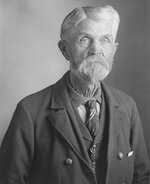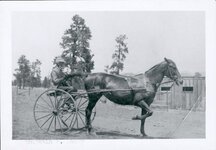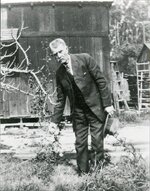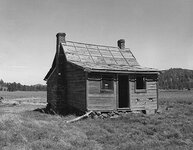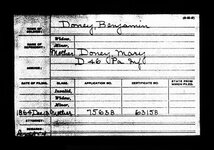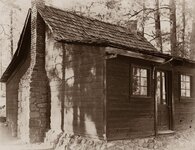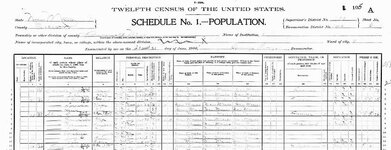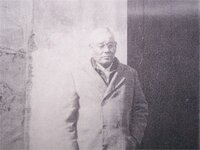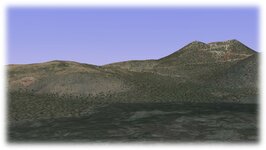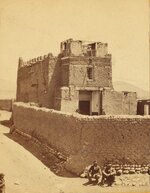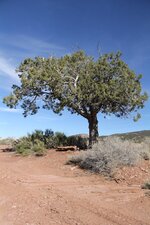Padres' Lost Silver Bars
This legend has come from several sources, though Maurice Kildare (Gladwell Richardson) appears to be the best source for the details of the story.
In July of 1769, a Spanish mule train lead by Franciscan Padres carrying 96 bars of silver was headed East from a location near present day Flagstaff toward their headquarter mission Santa Fe, NM. The mule train was attacked by Indians in the foot hills San Francisco Mountains, which were known in those days as the Sierra St. Francis and also Sierra Azul. The heavily laden mules started dying, and the attacks continued. The attacks got worse and soldiers were killed. After a final attack in a place called Padre Canyon, the group decided to bury the bars, as the mules were mules were too weak to continue, and only ten persons remained alive. The group then split, five going East and five going West, in attempts to get away.
In 1902, police in Kansas City picked an aging vagrant named Jose Chavez. He was suffering from pneumonia and was taken to a local hospital charity ward. After the second day it was clear that he was on his deathbed. Chavez called out to his nurse and handed her a vellum. He told her that this was a map to a great treasure of bars hidden in Arizona. Chavez passed away. The nurse did nothing with the document until she showed it to a doctor on staff at the hospital. The map eventually wound up in the possession of George McCormick, of Flagstaff. He had carefully translated the text which told the story of the attacks that took place from July 12 through July 19. The map and text were written by a soldier named D. Silva, one of the survivors that headed West to draw the Indians away from the two Padres and three remaining soldiers that had headed East.
Jose Chavez was well know around Albuquerque and was thought to be over 90 years old. He had been employed at the Mission in Santa Fe restoring leather bound books. There is a possibility that Chavez took the document from one of the books on which he worked.
In 1909 McCormick went to Flagstaff. He wanted to find someone that was familiar with the country, and contacted a Civil War Veteran by the name of Ben Doney. Doney provided guide service in the area. Sometime about 1910, a cowman by the name of Jack Diamond talked to a sheepherder that ran his herd in the meadows East of O'Leary Peak. He had found a bar that he thought was made out of iron. It was about 4" by 4", and about 23" long. It was found near the Eagle Rock Nest in Bonito Park. Diamond scratched the surface of the bar with his knife, and determined that the bar was silver. It apparently was one that was lost on the mule trains travel East.
The bar was sold to Alf's Dickinson's Pine Hotel on Santa Fe Avenue, and was on display for many years.
George McCormick and his Son looked for the bars for many years. Ben Doney never gave up either. He spent the rest of his life looking for the bars.
The red spot on the side of the mountain clearly identifies the East side of O'Leary Peak, and can be viewed using Google Earth.
This legend has come from several sources, though Maurice Kildare (Gladwell Richardson) appears to be the best source for the details of the story.
In July of 1769, a Spanish mule train lead by Franciscan Padres carrying 96 bars of silver was headed East from a location near present day Flagstaff toward their headquarter mission Santa Fe, NM. The mule train was attacked by Indians in the foot hills San Francisco Mountains, which were known in those days as the Sierra St. Francis and also Sierra Azul. The heavily laden mules started dying, and the attacks continued. The attacks got worse and soldiers were killed. After a final attack in a place called Padre Canyon, the group decided to bury the bars, as the mules were mules were too weak to continue, and only ten persons remained alive. The group then split, five going East and five going West, in attempts to get away.
In 1902, police in Kansas City picked an aging vagrant named Jose Chavez. He was suffering from pneumonia and was taken to a local hospital charity ward. After the second day it was clear that he was on his deathbed. Chavez called out to his nurse and handed her a vellum. He told her that this was a map to a great treasure of bars hidden in Arizona. Chavez passed away. The nurse did nothing with the document until she showed it to a doctor on staff at the hospital. The map eventually wound up in the possession of George McCormick, of Flagstaff. He had carefully translated the text which told the story of the attacks that took place from July 12 through July 19. The map and text were written by a soldier named D. Silva, one of the survivors that headed West to draw the Indians away from the two Padres and three remaining soldiers that had headed East.
Jose Chavez was well know around Albuquerque and was thought to be over 90 years old. He had been employed at the Mission in Santa Fe restoring leather bound books. There is a possibility that Chavez took the document from one of the books on which he worked.
In 1909 McCormick went to Flagstaff. He wanted to find someone that was familiar with the country, and contacted a Civil War Veteran by the name of Ben Doney. Doney provided guide service in the area. Sometime about 1910, a cowman by the name of Jack Diamond talked to a sheepherder that ran his herd in the meadows East of O'Leary Peak. He had found a bar that he thought was made out of iron. It was about 4" by 4", and about 23" long. It was found near the Eagle Rock Nest in Bonito Park. Diamond scratched the surface of the bar with his knife, and determined that the bar was silver. It apparently was one that was lost on the mule trains travel East.
The bar was sold to Alf's Dickinson's Pine Hotel on Santa Fe Avenue, and was on display for many years.
George McCormick and his Son looked for the bars for many years. Ben Doney never gave up either. He spent the rest of his life looking for the bars.
The red spot on the side of the mountain clearly identifies the East side of O'Leary Peak, and can be viewed using Google Earth.
Amazon Forum Fav 👍
Attachments
Last edited:


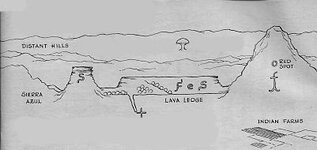


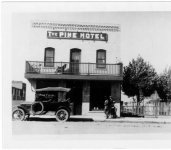
 ...The hotel was in flagstaff. I mixed it up and thought it was in Santa Fe
...The hotel was in flagstaff. I mixed it up and thought it was in Santa Fe